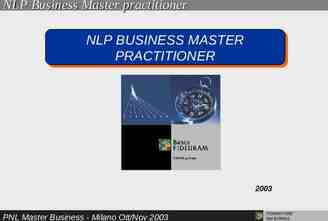Learning IOT in Edge: Deep Learning for the Internet of Things with
26 Slides4.53 MB

Learning IOT in Edge: Deep Learning for the Internet of Things with Edge Computing He Li, Karol Ota, and Mianxiong Dong [11] H. Li, K. Ota, and M. Dong, “Learning IoT in edge: Deep learning for the Internet of Things with edge computing,” IEEE Netw., vol. 32, no. 1, pp. 96–101, Jan./Feb. 2018. 1

Introduction Deep learning plays an important role in IOT services Edge computing is an important technology for IOT services Deep learning model is appropriate for the edge computing Privacy is preserved in intermediate data transferring Improve learning performance and reduce network traffic 2

Motivation There are different intermediate data size and preprocessing overhead with different deep learning models Try to guarantee the QoS of each deep learning service for IoT in the scheduling 3

Contributions Introduced deep learning for IoT into edge computing environment Formulated an model for varying deep learning models for IoT in edge computing Designed efficient algorithms to optimize the service capacity of the edge computing model Test the deep learning model for IoT with extensive experiments in a given edge computing environment 4

Related Work-Deep learning for IOT Important benefits of deep learning over machine learning: 1. Better performance with large data scale 2. Extract new features automatically for different problems 3. Takes less time to inference information 5

Related Work-Deep learning for IOT Execute deep learning task in IoT devices Lane et al.[10] DeepEar and DeepX [10] N. D. Lane, P. Georgiev, and L. Qendro, “Deepear: Robust Smartphone Audio Sensing in Unconstrained Acoustic Environments Using Deep Learning,” Proc. 2015 ACM Int’l. Joint Conf. Pervasive and Ubiquitous Computing, 2015, pp. 283-94. 6

Related Work-Deep learning for IOT Introduce deep learning into more IoT applications[11] Bhattacharya et al.[12] New deep learning model for wearable IOT devices [11] L. Li et al., “Eyes in the Dark: Distributed Scene Understand- ing for Disaster Management,” IEEE Trans. Parallel Distrib. Systems, 2017. DOI: 10.1109/TPDS.2017.2740294. [12] S. Bhattacharya and N. D. Lane, “Sparsification and Sepa- ration of Deep Learning Layers for Constrained Resource Inference on Wearables,” Proc. 14th ACM Conf. Embedded Network Sensor Systems CD-ROM, ser. SenSys ‘16, 2016, pp. 176–89. 7

Related Work-Deep learning for IOT Cloud-assisted deep learning applications Alsheikh et al.[13] A framework combine deep learning algorithms and Apache Spark for IOT data analytics It is very similar to edge computing [13] M. A. Alsheikh et al., “Mobile Big Data Analytics Using Deep Learning and Apache Spark,” IEEE Network, vol. 30, no. 3, May/June 2016, pp. 22–29. 8

Related Work-Deep learning and edge computing Edge computing brings improvements to cloud computing: 1. Preprocess large amounts of data before transferring them to central servers 2. The cloud resources are optimized Liu et al. Food recognition application 9

Deep learning for IOT in edge computing-A video sensing scenario The cameras monitoring the environment and collect the video data Then the cameras transfer the collected data to the IOT gateway IOT gateway forward all collected data to the cloud server after processing the raw data 10

Deep learning for IOT in edge computing-A video sensing scenario The input data will be processed in the deep learning layers Each layer processes the intermediate feature from previous layer and generates new features The features generated by the last layer will be processed by a classifier and recognized as the output 11

Deep learning for IOT in edge computing-Problem Deep learning improves the efficiency of multimedia processing for IOT services The communication performance will be the bottleneck 12

Deep learning for IOT in edge computing-Solution: Edge computing Edge layer: IOT devices, IOT gateway, Network access points in LAN Cloud layer: Internet connections, Cloud servers Processing will be performed in the edge layer Only intermediate data or results need to be transferred, the pressure on the network is relieved 13

Deep learning for IOT in edge computing-An edge computing structure for IOT deep learning tasks 14

Deep learning for IOT in edge computing-How to divide each deep learning network Deploying more layers into edge servers can reduce more network traffic The server capacity of edge servers is limited compared to cloud servers Every layer will bring additional computational overhead to the server Different deep learning networks and tasks have different size of intermediate data and computational overhead Efficient scheduling is needed 15

Scheduling problem and solution 16

Scheduling problem and solution-Offline algorithm 1. Find out : : maximizes : largest input data of task 2. Sort all tasks in ascending order of the largest input data size 3. Deploy task with minimum input data size to edge servers 17

Scheduling problem and solution-Offline algorithm Check if all edge servers have enough service capability and network bandwidth to deploy Enough: Deploy into all edge servers An edge server not enough: Change and find out an appropriate Not enough even after varying : Not deploy 18

Scheduling problem and solution-Online algorithm The task scheduling has little information of future tasks, the deployment decision is based on the historical task Find out and Define: If , and other edge servers have enough bandwidth and service capacity, deploys into edge servers 19

Performance evaluationCollecting data from deep learning tasks Use Caffe as the CNN framework Define 10 different CNN networks Execute 10 CNN tasks with different CNN networks Record the number of operations and intermediate data generated in each layer 20

Performance evaluationCollecting data from deep Blue plots: reduced data size ratio learning tasks Red plots: computational overhead The input data can be reduced by the deep learning networks More intermediate data are reduced by lower layers Computational overhead is increased quickly with more layers 21

Performance evaluationSimulation: Fixed mode vs Offline algorithm The scheduling algorithm outperforms the fixed mode 22

Performance evaluationSimulation: FIFO vs Online algorithm and LBF vs Online algorithm When number of input tasks is near 600, the online algorithm deploys more tasks than FIFO When number of inout tasks is near 800, the online algorithm deploys more tasks than LBF Their online algorithm outperforms FIFO and LBF over a long time period 23

Conclusion The deep learning model is appropriate for the edge computing environment The performance evaluation state that their solutions can increase the number of tasks deployed in edge servers with guaranteed QoS requirements 24

Discussion Why the algorithm have to deploy a task in all edge servers? 1. For better performance 2. Set a threshold 25

Thanks for listening 26






